Last updated: October 11, 2024
Article
Climate, Water Temperature, and the Condition of Sentinel Streams at Glacier National Park, 2007–2019
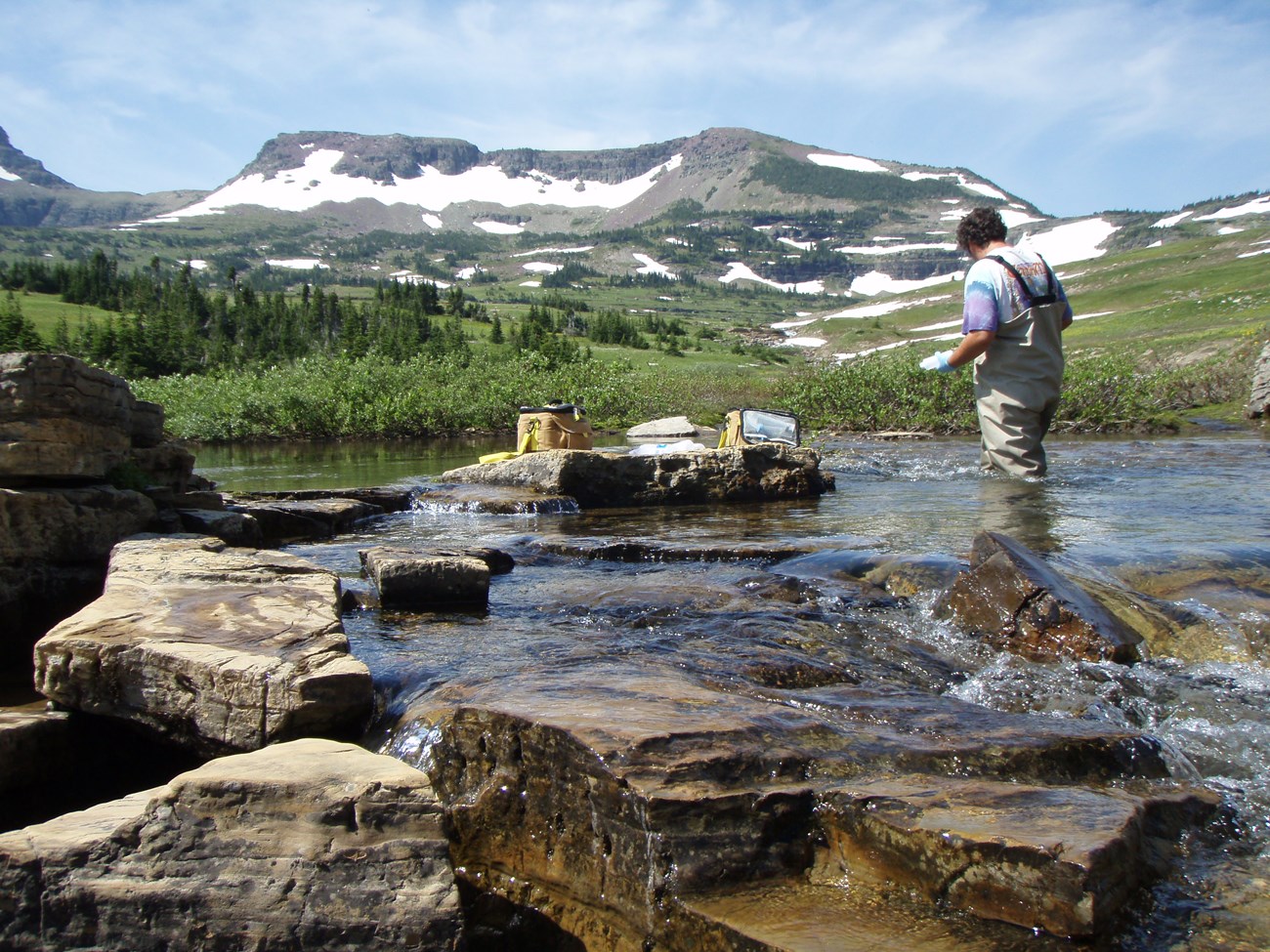
NPS/B. Schweiger
Scenic and largely pristine, most of Glacier National Park’s streams are Outstanding Resource Waters in Montana. They host unique aquatic life, like the imperiled bull trout (Salvelinus confluentus), west-slope cutthroat trout (Oncorhynchus clarkia lewisi), endemic aquatic invertebrates such as the threatened meltwater stonefly (Lednia tumana), and almost 50 new to science diatom (algae) species. While protected within the park, Glacier's streams are still vulnerable to indirect stressors, such as climate change and air pollution.
To track conditions and alert park managers to concerning changes, the Rocky Mountain Inventory and Monitoring Network monitors Glacier’s streams. Because streams are part of a larger hydrologic system, we measure not only water quality and quantity, but also streamside habitat, watershed conditions, stressors, and how aquatic invertebrates and algae are faring. (Park staff handle fish focused work.) Our integrated results help park managers identify what may be changing and what may be driving those changes. For example, we are documenting climate driven changes on stream water temperature.
We sample different subsets of streams at Glacier, each providing specific information. This article summarizes results from monitoring 6 “sentinel” streams from 2007 to 20191. Sentinel streams are hand-picked as the “canaries in the coal mine” to reveal meaningful changes, especially when compared with conditions gleaned from the other 2 stream subsets (randomly selected “survey” sites and hand-picked “gradient” sites).
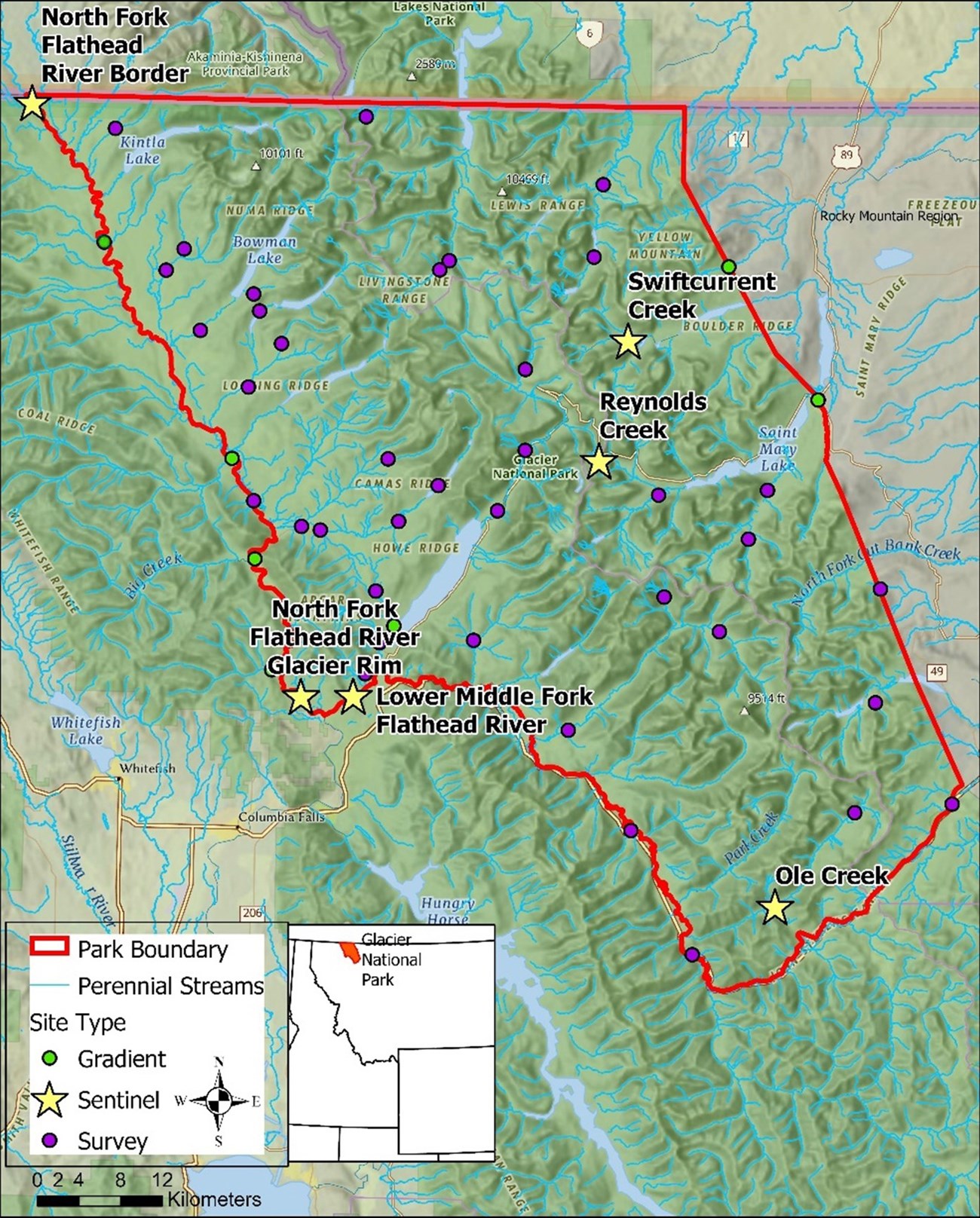
NPS
The following table summarizes several different indicators of sentinel stream conditions in Glacier National Park based on monitoring between 2007 and 2019.

NPS
Climate and Water Balance
Climate is the master variable controlling many aspects of stream ecology in Glacier. We measure climate through air temperature and precipitation, and we drill down to its local effects by examining “water balance.” Water balance helps us understand how much water is actually available for streams, plants, and animals based on how temperature and precipitation interact with local soil, slope, aspect, and vegetation. Climate directly affects water temperature, and, concerningly, sentinel streams at Glacier warmed significantly between 2007 and 2019 (more below). Coupled with predictions for warmer conditions at Glacier and less available water, most climate and water balance indicators were in poor condition and declining.
Human Disturbance
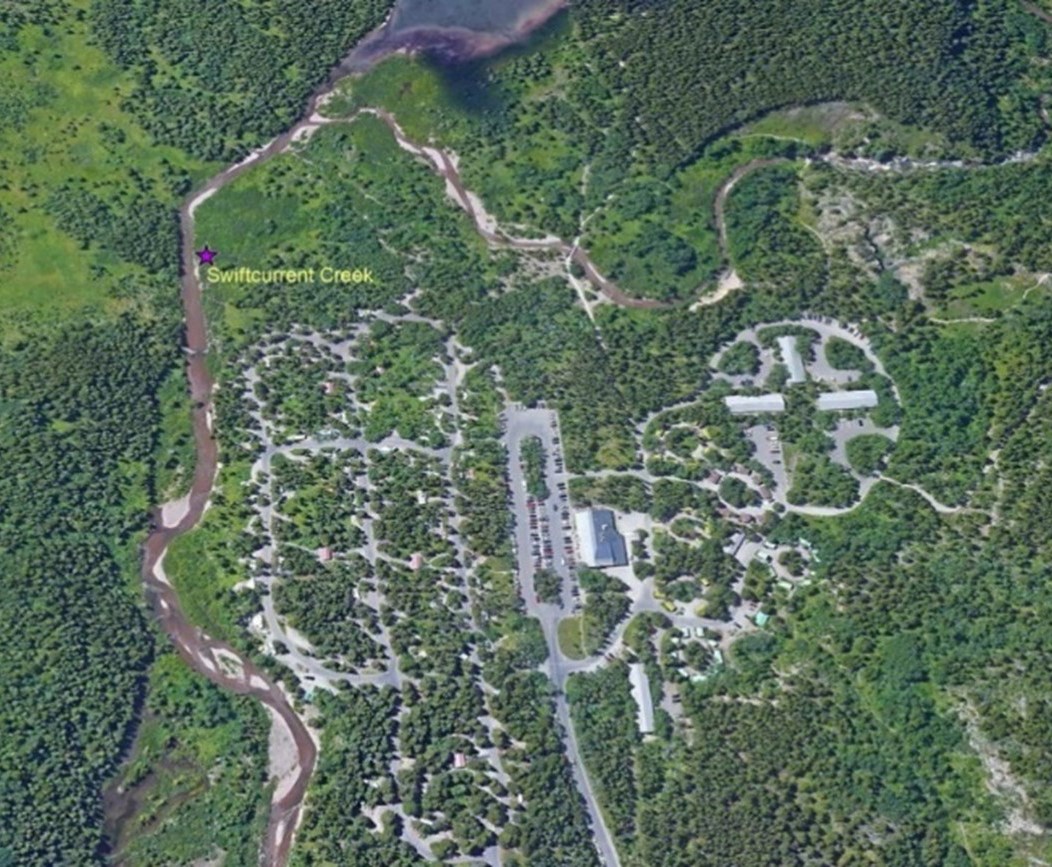
We look at local and watershed-scale disturbances to calculate a Human Disturbance Index. Local disturbances include roads and trails, structures, and other nearby impacts. Watershed-scale disturbances include the density of stream–road crossings, which cause erosion. Overall, sentinel stream sites were in good condition, with no sign of significant changes. However, park visitation is growing at Glacier. We noted increases in social trails, vegetation trampling, and roads near Swiftcurrent Creek, for example, and will track these impacts carefully.
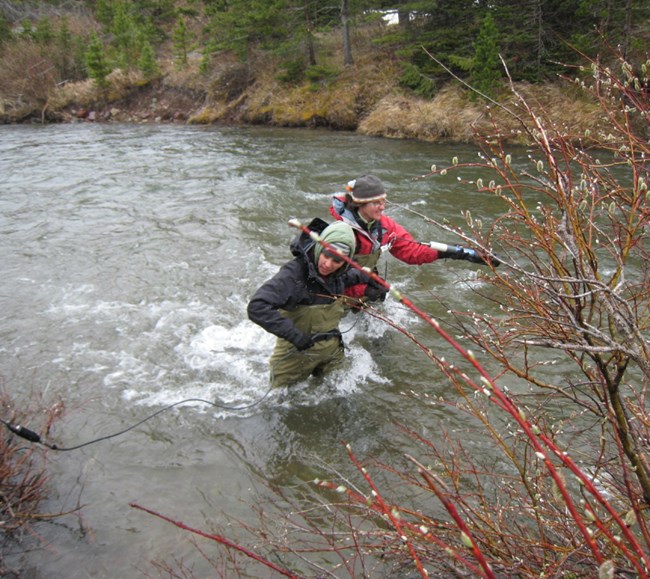
NPS/J. Guse
Water and Sediment Chemistry
Aquatic life thrives within a specific window of water and sediment chemistry conditions. Measuring qualities like pH, dissolved oxygen, suspended sediment, nutrients, trace metals, and salinity, we found that most indicators were in good condition, with little change over time at sentinel streams in Glacier.
A few exceptions occurred. Chloride and calcium (major ions that affect salinity) increased slightly at Swiftcurrent Creek, with several potential causes. The ions may have been deposited as airborne pollutants, washed into the stream during nearby road maintenance, or added by the accelerated weathering of sedimentary rocks due to complex climate interactions. Acidity (pH) was also periodically high at our alpine site on Reynolds Creek. This may have been caused by airborne nitrates or sulfates from sources outside the park that interact with stream water to lower its pH. Surprisingly, trace metals in streambed sediments increased or were higher than expected, including copper and zinc at Swiftcurrent Creek, cadmium and arsenic at Reynolds Creek, and arsenic at the North Fork of the Flathead River at the border. Likely linked to climate, these metal concentrations in the park need more research.
Water Temperature
Driven by climate, water temperature at 4 of Glacier’s sentinel stream sites increased an estimated 1 to 1.5 °C per decade from 2007 to 2019. This is a large and concerning change. Water temperature affects the survival of stream life, like the federally threatened bull trout, as well as aquatic invertebrates at the base of the food web.
Physical Habitat
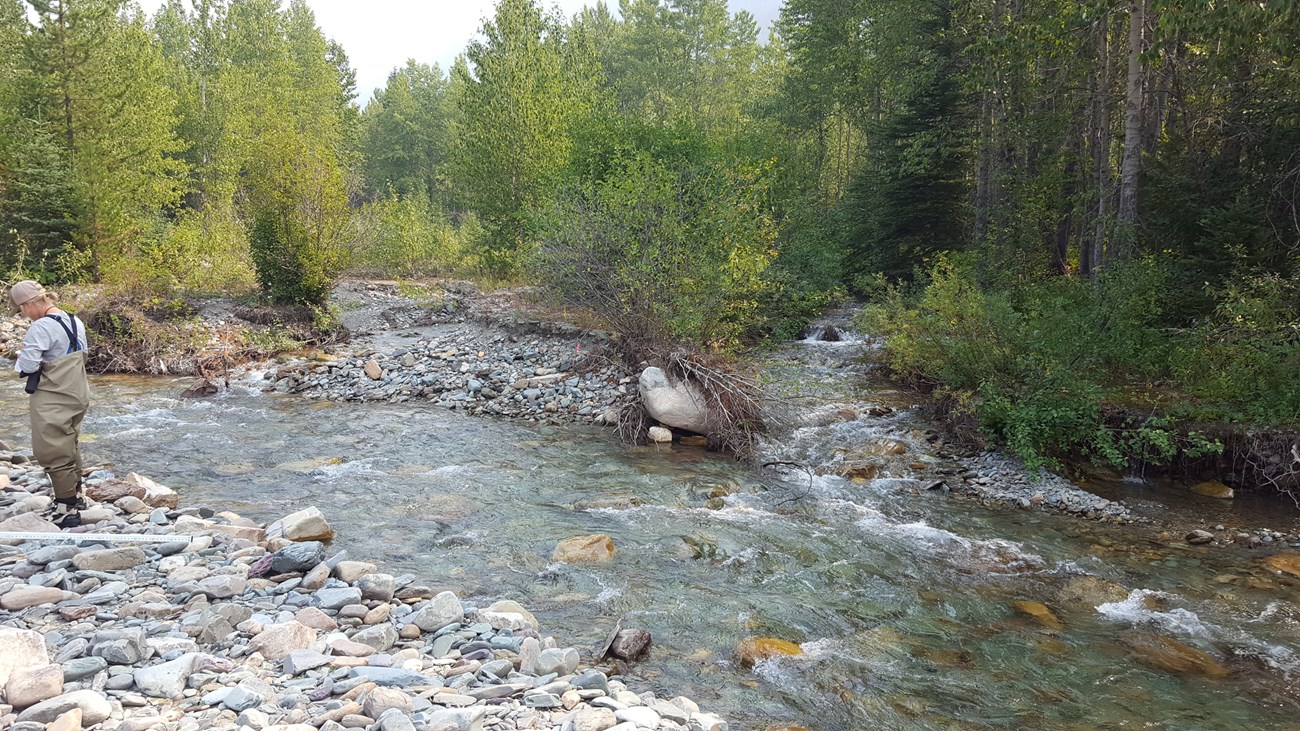
NPS/B. Schweiger
Stream ecological integrity comprises more than just water quality. The shape of a stream channel, from its sinuosity and bank slope to the presence of deep pools or woody debris, as well as the nature of its shoreline vegetation, all affect how well a stream supports life. Glacier’s sentinel stream physical habitat was largely in good condition and stable. One exception was the presence, though low, of invasive exotic plants in most years at all sites but Reynolds Creek. Desired condition for the park is zero invasive exotic plants.
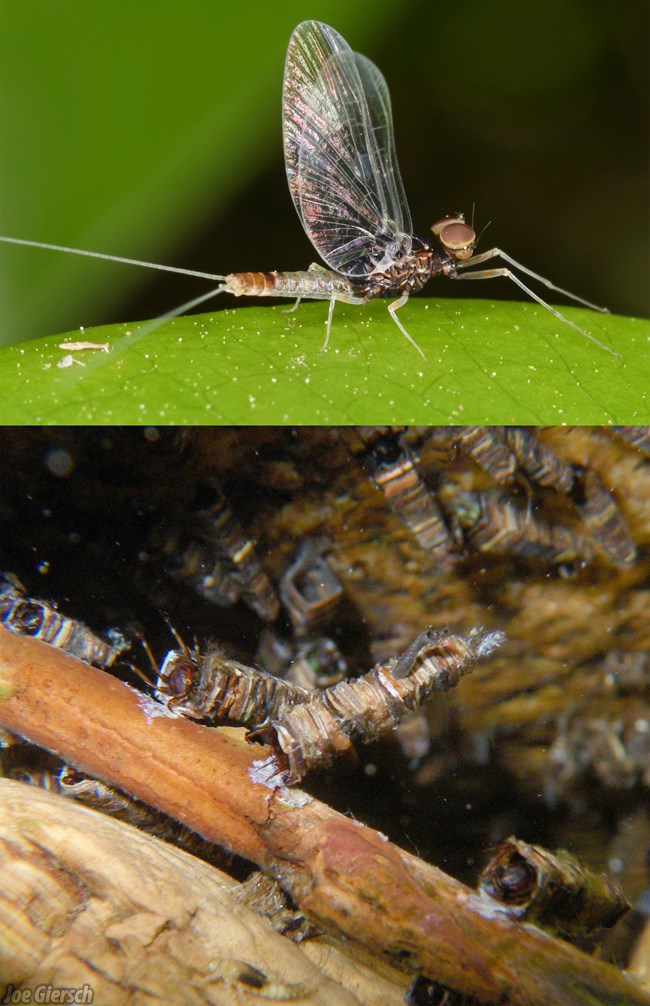
Courtesy USGS/J. Giersch
Bioassessment
Because aquatic invertebrates and algae tolerate disturbances differently, we can look at the mix of species to examine stream condition—a technique known as bioassessment. We also measure Aquatic Invasive Species (AIS) like the native but invasive diatom (algae), Didymosphenia geminata, or “didymo,” which can degrade streams. Overall, bioassessment showed that sentinel streams were in good condition. We detected no increase in didymo or any other AIS from 2007 to 2019 at sentinel sites. However, didymo should still be watched because we have not resampled all baseline “survey” sites sampled in 2007–2009, where didymo was abundantly detected. We did see the effect of warmer stream water on aquatic invertebrates, with more warm water tolerant species in the mix.
Outside of the network’s monitoring program, park staff detected concerning patterns in aquatic invasive fish. Rainbow and brook trout (Oncorhynchus mykiss and Salvelinus fontinalis, respectively) increased or expanded in tributaries of the Middle and North Forks of the Flathead River. Park staff also documented brook and bull trout hybridization for the first time in the St. Mary River watershed.
Management Applications
Glacier National Park’s streams are largely pristine but not invulnerable. Accelerating climate driven changes will affect streams and all park natural resources. Managers still face challenges, for example, to protect alpine streams where rare meltwater stoneflies occur, and to maintain the character of Glacier’s wild and scenic rivers. Stream monitoring alerts managers to concerning changes, such as warming water and human disturbance. In the bigger picture, Glacier’s high quality stream habitat may also serve as a useful reference for land managers across the region aiming to restore more disturbed streams.
More Information
Read the full report:
1 Schweiger, E. W., K. Sherrill, M. Bozek, D. Witwicki, and S. Esser. 2024. Glacier National Park stream ecological integrity: 2007–2019 trend synthesis report. Natural Resource Report NPS/ROMN/NRR—2024/2631. National Park Service, Fort Collins, Colorado. https://doi.org/10.36967/2302379
Contact Billy Schweiger, billy_schweiger@nps.gov
National Park Service, Inventory and Monitoring Division, Rocky Mountain Network
View a printable brief of this article.
This article prepared by Sonya Daw, Billy Schweiger, and Dana Witwicki.
